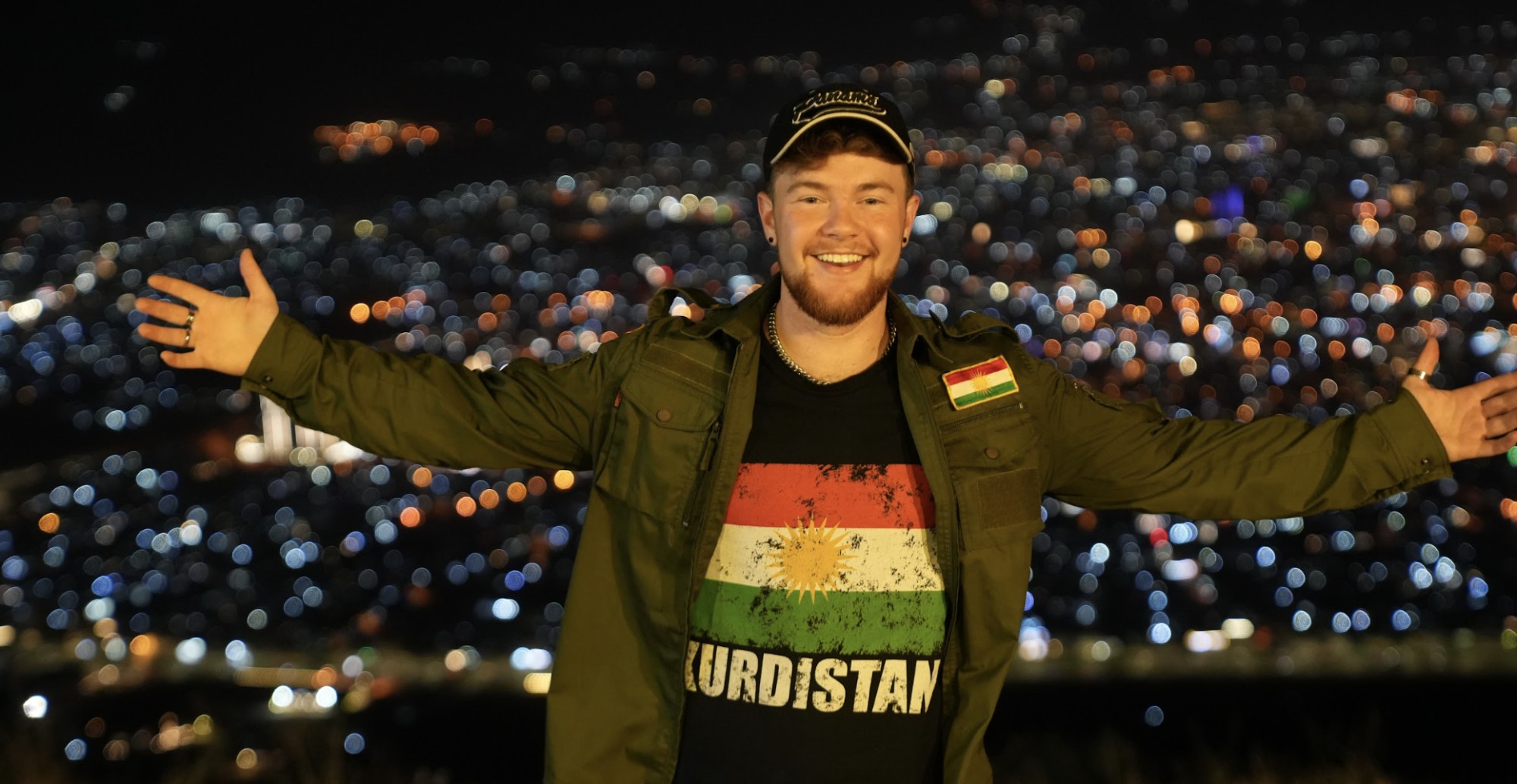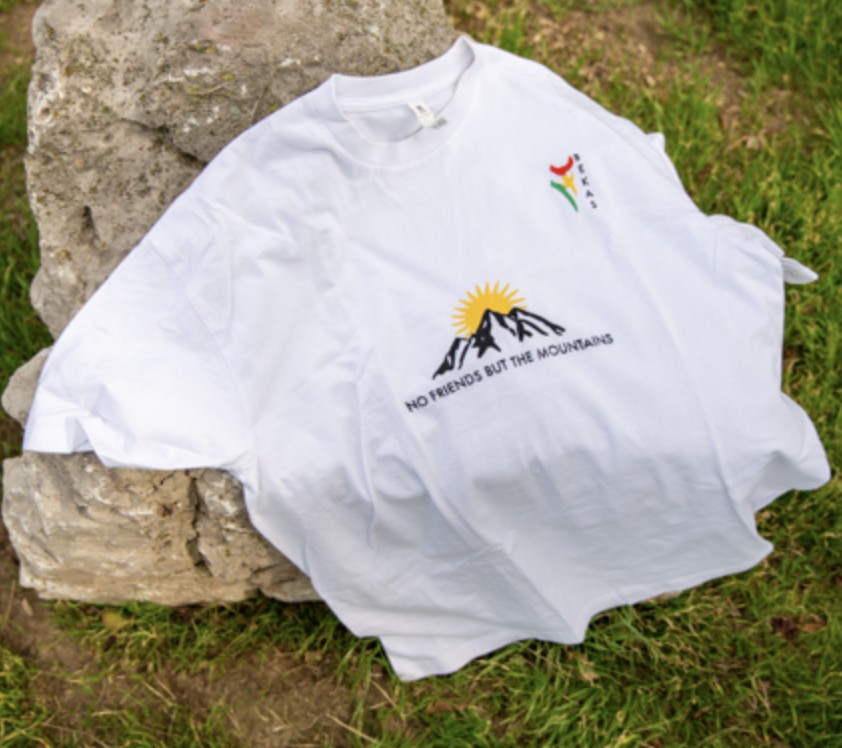Amanj Amin, 38, is a soft-spoken man with an overgrown moustache on his upper lip and a goatee beard. He spends hours a day in his home studio, where he creates digital art while sipping coffee.
His works are bold and provocative but also a reflection of his beliefs. Everyone needs to leave something behind, and for Amanj, that something is his art.
His works have been displayed all around the world, including in Europe, Japan, the Arab Gulf countries, and his home, the Kurdistan Region.
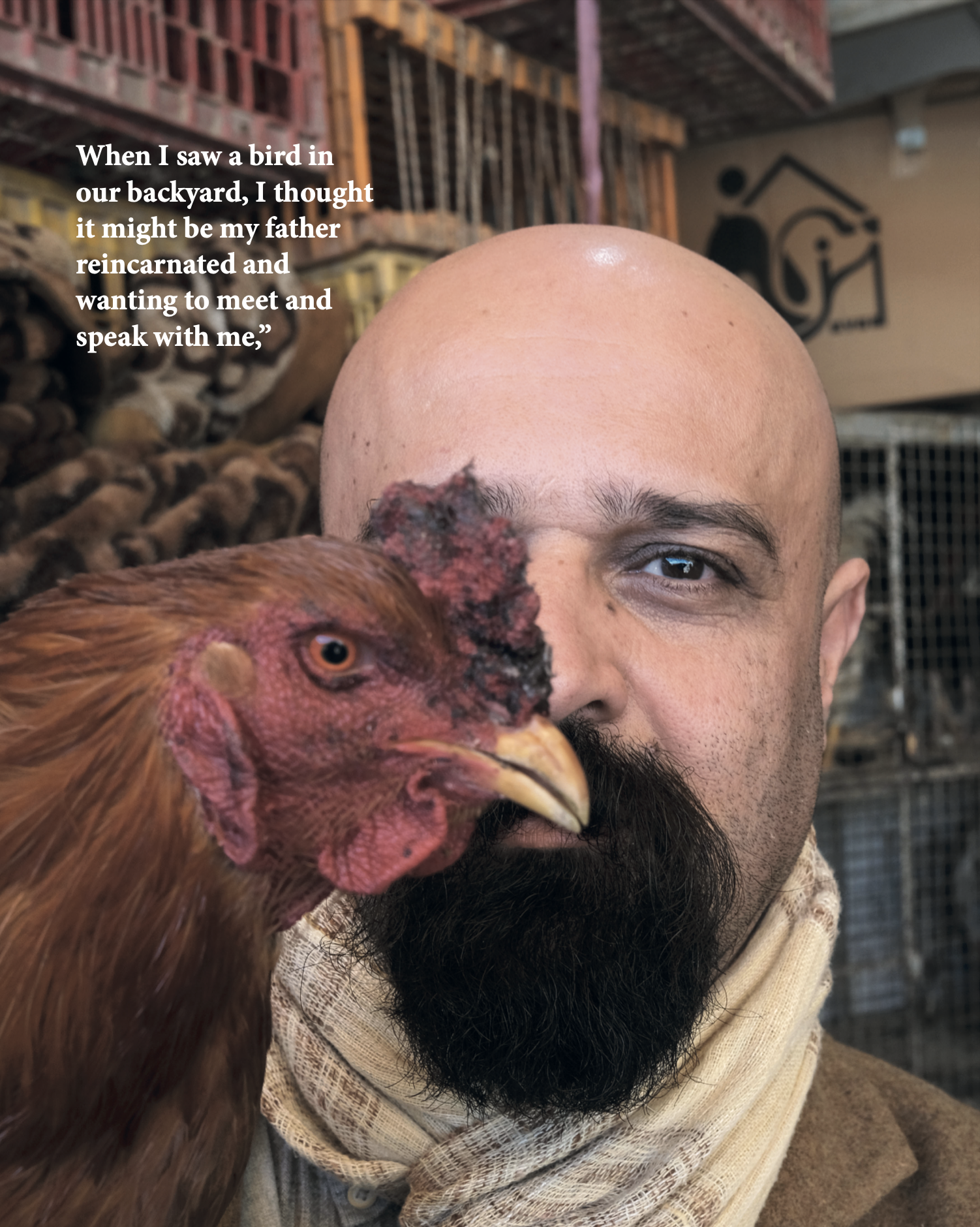
His work is motivated by a desire to build a utopia in which war and violence are unacceptable. Humans in this utopia have close relationships with trees, animals, and birds; there are no superiors or inferiors any kind.
"It all started when I began searching for my father's soul," he says of his creativity, which is based on his life story and religion.
Amanj was only seven months old when his father disappeared in 1985, and his family blames Saddam's regime. Amanj was born in the city of Kirkuk and is a follower of the Kakai or Yarasan religion, a syncretic religion that believes in soul transmigration (donadon in Kurdish) and whose followers are in Kirkuk, Halabja, and Iranian Kurdistan.
"Since I was a kid I always waited for my father to return. When I saw a bird in our backyard, I thought it might be my father reincarnated and wanting to meet and speak with me," Amanj explained.
In 1991, he participated in an exhibition at the Artists' Union in Kirkuk for the first time by framing and displaying his father's clothing, what is currently known as installation art. This type of artistic understatement did not exist at the time.
One of Amanj's main themes is animals and birds with human bodies, work he has only shown in Kurdistan and Europe. He is hesitant to exhibit it elsewhere in Iraq.
“I don't want my art to incite violence toward the religious minorities who believe in transmigration of the soul," he told Kurdistan Chronicle, adding that he doesn't think the Iraqi audience is ready for such a concept.
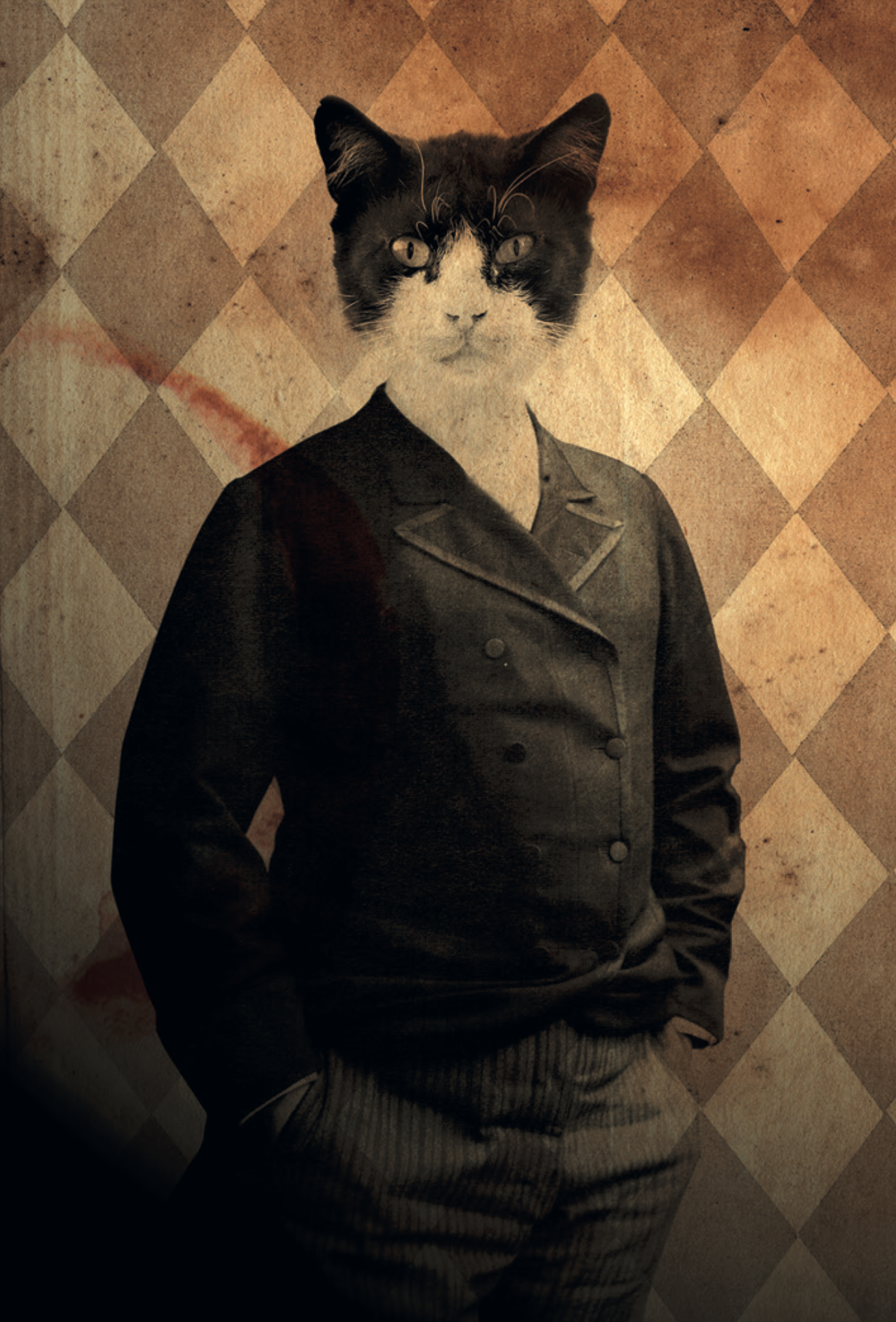
Art deliverables for every home
“The Genocide Stamps” are widely recognized as a significant piece of Amanj’s art. After ISIS invaded Mosul in June 2014, he quickly came up with a plan to expose its crimes and began committing atrocities against Kurdish Yezidis, Christians, and Shiite Muslims. He subsequently chose to design postage stamps.
"I chose stamps because they can be delivered to every home and have material value," said Amanj, who later expanded on the idea by including the atrocities committed by Iraq, including the infamous 1988 chemical weapons attack on the Kurdish city of Halabja by Saddam Hussein's regime.
He even created a stamp featuring Iraqi human right activist Nadia Murad before she received the 2018 Nobel Peace Prize for her work as a leading advocate for survivors of genocide and sexual violence.
Stamps designed by Amanj have been issued internationally, including by the Universal Postal Union. Moreover, at the Dubai Expo in 2022, he displayed his "Genocide Stamps" to an international audience.
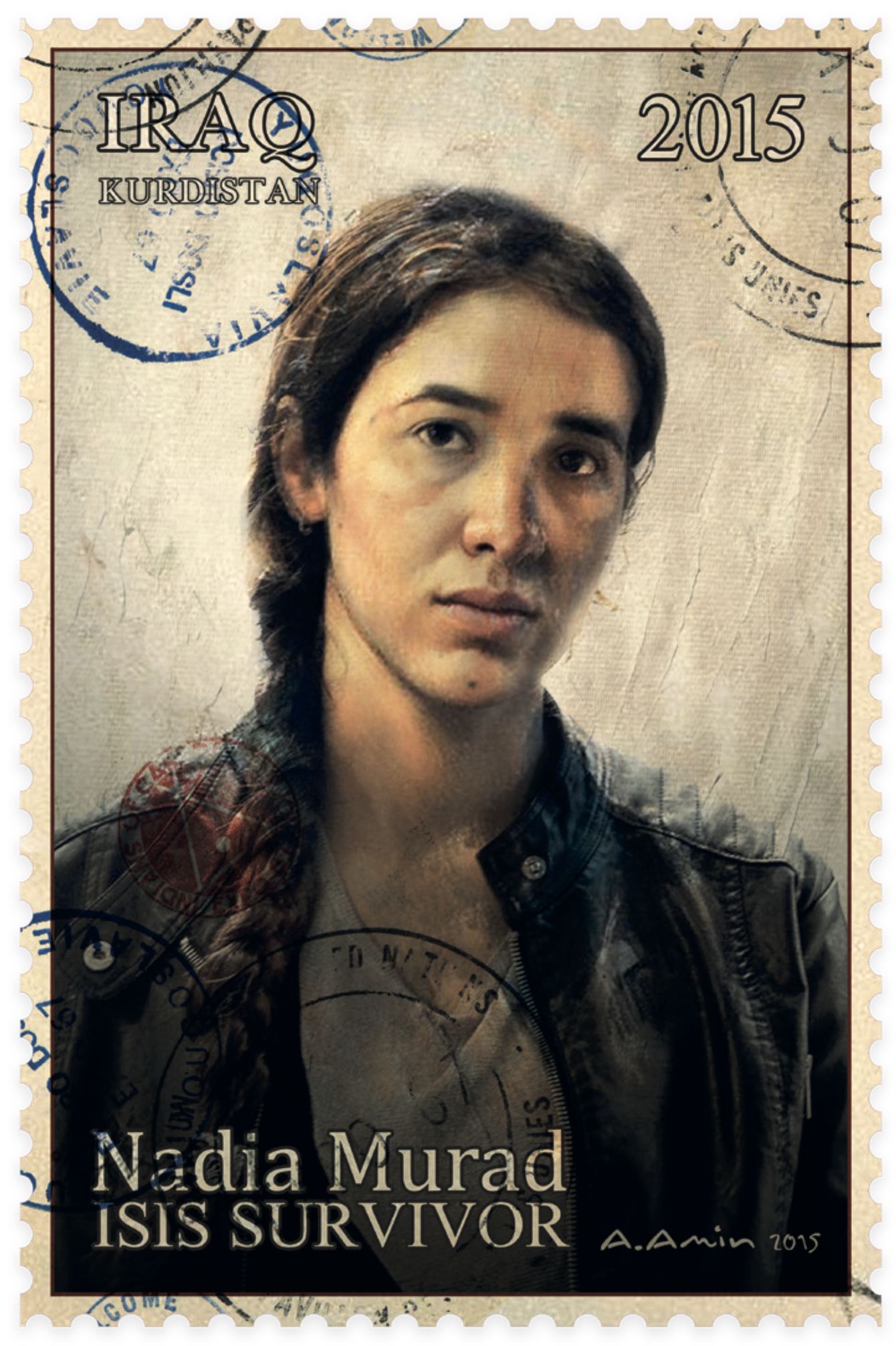
Climate friendly
Amanj is also well-known for addressing the theme of climate change in his art by highlighting the role that humans play in damaging the environment and encouraging people to recycle rather than pollute. With the assistance of the German Goethe Institute, he recently exhibited artwork in Erbil and Baghdad that draws attention to environmental issues such as air, water, and waste pollution.
"I need a pollution-free climate to build the utopia," Amanj explained.
One of the key reasons Amanj works as a digital artist rather than a traditional one is that traditional art produces a lot of waste and causes environmental harm.
The artist is currently working on a new project that involves gathering forgotten Kurdish stories, which were previously only spoken orally over the past decades but are now on the verge of being lost forever, and transforming them into works of art.
"Archiving history through art is preferable to archiving history through words, since words are progressively altered and lose their original meaning, while art cannot be altered," Amanj said.
Qassim Khidhir has 15 years of experience in journalism and media development in Iraq. He has contributed to both local and international media outlets.
